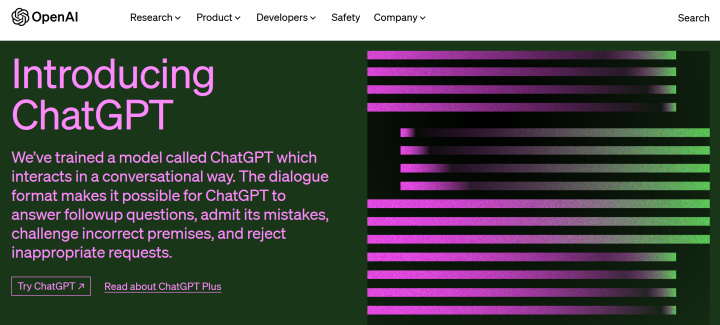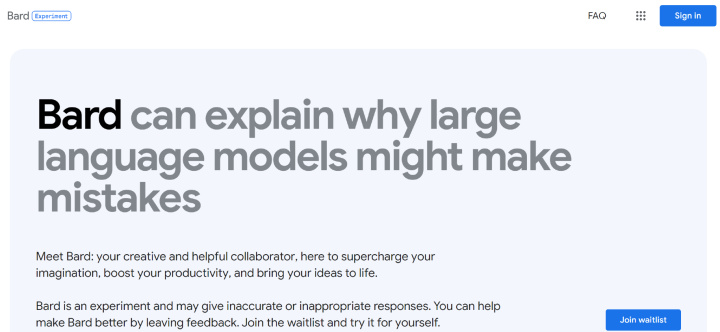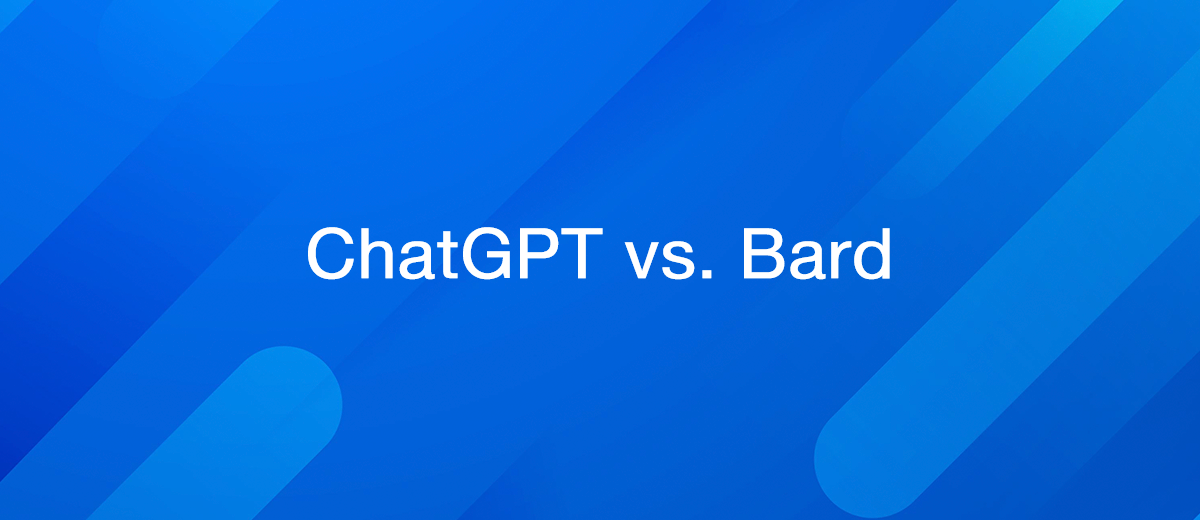Google Bard vs. ChatGPT: Comparing AI Chatbots
2023 can rightly be called the year of the triumphant march of generative neural networks, which have successfully mastered many intellectual and creative pursuits. A breakthrough in this area was made by OpenAI, the first to release a chatbot with support for artificial intelligence ChatGPT, in November 2022. Soon, Google picked up the baton by introducing its conversational AI chatbot Google Bard in March 2023. Today, these two services use the most powerful and productive natural language processing models. Both have very broad prospects for further development and can become universal virtual human assistants in the near future. In our article, we will briefly talk about what ChatGPT vs Google Bard chatbots are, what similarities and differences they have, and also conduct a comparative analysis of these systems.
What is ChatGPT?

ChatGPT is an artificial intelligence chatbot that was created based on the GPT 3.5 algorithm and updated to the new version of the GPT 4 algorithm in March 2023. It works in a dialogue mode, responding to users' requests and providing them with the necessary information. The program can find answers to questions in many areas, write program code and debug it, write scripts, prose, poetry and other texts, create music, and solve tests and other types of tasks in various disciplines. ChatGPT is not just a source of information, but also a good conversationalist. It imitates human communication with high fidelity and can even argue with an opponent.
This AI chatbot is based on machine learning, which uses not only a large amount of data, but also interactive interaction with a person. In the process of training the neural network, special human trainers participated, who played out different models of communication between artificial intelligence and the user. They asked it various questions and scored it responses using reward models to encourage the algorithm to introspect and self-learn.
As a result, ChatGPT not only learned intensively, but also relearned considering coaches' assessments, gradually increasing the accuracy and completeness of its answers and becoming more "human". In addition, the program not only generates efficiently, but also translates texts from one language to another, which makes it possible to use it as a fairly high-quality online translator.
In March 2023, the chatbot was retrained using the improved GPT 4 algorithm, and this significantly expanded its capabilities. At the same time, it constantly continues self-learning, as it can save and analyze dialogues with users to improve its potential.
Now, ChatGPT's RAM can hold up to 25,000 words – that is, it can process, generate and translate exactly this amount of text in one request. Thanks to this, the updated bot solves much larger tasks than its predecessor with the GPT 3.5 AI language model could perform. The upgraded neural network can write fully working code for a small program, a detailed legal contract, a literary work, and so on. It is also more accurately recognizes the context and adheres to the given style of replicas.
The developers believe that after the implementation of the 4th version of the ChatGPT algorithm, it has become more creative, behaves more efficiently when working with "thin scenarios" and more flexibly adapts to the user. Moreover, with it, the chatbot got the ability to process images. It analyzes pictures, understands their content and context, and matches them with given queries to generate the most accurate answer.
What is Google Bard?

Google Bard is a popular chatbot software based on artificial intelligence and machine learning technologies. The virtual assistant interacts with the Google search engine, and can also be integrated into third-party sites, mobile applications, online chats, and other software. It is based on the LaMDA (Language Model for Dialogue Applications) created by Google employees. The latest version of this algorithm today contains a dataset of more than 1.5 trillion words. The predecessor of this model was the open source neural network Transformer released by Google in 2017.
- Automate the work of an online store or landing
- Empower through integration
- Don't spend money on programmers and integrators
- Save time by automating routine tasks
The AI algorithms of this chatbot are trained to mimic natural language in a quality manner. This is its main feature. Google Bard doesn't just provide information to users, it does so based on the context of queries. Another useful function of the program is the recognition and processing of leading questions. It has become an innovative solution for search engines.
The prompt chatbot is equipped with a lightweight version of the LaMDA language model, which requires less computing power and makes it easier to scale. This helped the developers of Google Bard avoid the inherent problem of ChatGPT overload due to too many concurrent requests. A worthy argument in the competition between Google vs ChatGPT.
The neural network used in Bard is trained not only to analyze the questions and remarks of its interlocutors, but also to understand the nuances of the context and intent behind the requests. To achieve this result, the development team sorted high-level concepts and topics into clusters with a hierarchical structure. The model uses them as sources of information in the process of choosing the best answer. When creating LaMDA, emphasis was placed on ensuring that it answers were as authentic as possible and accurately mimicked natural human speech.
To train Bard, Infiniset was formed – a data array with Common Crawl materials, Wikipedia, various documents, as well as text recordings of dialogues and conversations from the Internet. Another important feature of this chatbot is its integration with the Google search service. The virtual consultant prepares its answers not only based on the information previously uploaded, but also considering current data from the Internet. This makes them more complete, accurate and reliable as the algorithm performs the search in real time.
The release of Google Bard was announced in early February 2023, and on March 21 the waiting list was opened. As of mid-April, users still have limited access to the new chatbot – only through a waiting list. The service is currently free and will likely remain so in the future given Google's plans to build it into its search engine. To use Bard, you must be over 18 and have a personal Google account. So far, it is only available to residents of the US and the UK, but over time, the developers plan to open it to other countries.
Like other generative neural networks, Google Bard is constantly self-learning, so it can make mistakes and misunderstandings. During the first demonstration of the program, the chatbot made a mistake in answering a question about the James Webb Space Telescope. It wrote that this telescope was the first to photograph a planet outside the solar system, although the first such image was taken by a ground-based observatory in 2004. The day after the gaffe was committed, Google's market value declined by $100 billion.
What's the Difference Between ChatGPT vs Google Bard?
Despite the almost identical purpose and many similarities, these AI chatbots have a number of important differences. They are due to different approaches to learning the language models used in the services. Among the main ones are the following:
- Various data sources. This is the main difference. ChatGPT uses exclusively information from its dataset, the relevance of which is limited to the end of 2021. Bard takes information for answers not only from the dataset, but also from the Internet in real-time, which makes them more complete and relevant.
- Bard is based on the LaMDA algorithm, designed specifically for conversational applications. The current version of ChatGPT is based on the GPT-4 neural network, designed to generate text content of various formats and topics.
- The AI tools in ChatGPT are versatile and capable of performing many tasks, from writing poetry and musical notes to explaining the meaning of images and programming. Google Bard is more highly specialized and sharpened for natural dialogue with imitation of human communication.
- The built-in LaMDA algorithm in Bard makes its answers as human-like as possible, and in places even indistinguishable from the written speech of a real person. It is trained to recognize the user's intentions and flexibly manage the context, adapting it when the topic changes. Sometimes it even overplays in an effort to look like a real interlocutor – for example, it can declare that it has feelings.
- ChatGPT configured to professionally solve a wide range of tasks in the field of forming and summarizing text queries. Its capabilities allow you to generate a much larger amount of coherent, ordered text on a given topic – up to 25,000 words. Another important difference of this AI chatbot is the option to analyze images and match data with user text queries.
- ChatGPT has a built-in plagiarism checker that allows it to generate exceptionally unique texts. This expands the functionality of the chatbot, allowing it to be used for writing scientific and educational papers, all kinds of articles, advertising texts and other content for which uniqueness is important. Google Bard does not have such a tool – the texts it creates can potentially be non-unique, and this limits the capabilities of the service.
Comparative Characteristics of Chatbots with AI
To compare chatbots ChatGPT and Google Bard, let's go through a few of their main characteristics:
- Accuracy. If you need the most accurate and up-to-date information at the time of the request, then Google Bard is definitely better than ChatGPT, which knows nothing about events since the end of 2021. It's also easier to fact-check data with Bard, thanks to its direct integration with Google Search. However, both services lack links to sources of information.
- Creativity. This is another important criterion for comparing Google vs Chat GPT. After testing both chatbots, you can see that ChatGPT gives more original answers to user requests. It is believed that the generative neural network built into it has a higher performance.
- Security and data protection. ChatGPT takes a reactive approach to security, which means that its developers address issues as they arise. Google Bard has a more proactive approach, but its developers still rely on user feedback to streamline processes.
- Ease of use. Both chatbots have a user-friendly interface, and the principles of interaction with them are quite similar. However, the quality of the function of leading questions declared by the developers of Google Bard leaves much to be desired. This becomes especially noticeable when compared with the Microsoft Bing chatbot.
- Availability. ChatGPT is available to users from most countries in the world, while only its basic version is free. To enable additional features of the chatbot, you need to purchase a ChatGPT Plus subscription for $20 per month. Google Bard is currently completely free, but access to it is limited - it can exclusively be used by residents of the US and the UK, and then only through a waiting list.
Conclusion
Summing up the comparison of ChatGPT vs Google Search AI-bot, we can say that Bard optimally copes with the tasks of a personal virtual assistant (like Alexa or Siri) with advanced functionality. It is convenient to use it for solving various everyday tasks – for example, selecting news and other relevant information, searching for hotels or restaurants, online booking, and so on.
As for ChatGPT, it is better suited for solving professional tasks related to text content. This AI chatbot can help you prepare a work of art or a technical article, draft a legal contract, and even code a simple but fully working program.
Apix-Drive is a universal tool that will quickly streamline any workflow, freeing you from routine and possible financial losses. Try ApiX-Drive in action and see how useful it is for you personally. In the meantime, when you are setting up connections between systems, think about where you are investing your free time, because now you will have much more of it.


